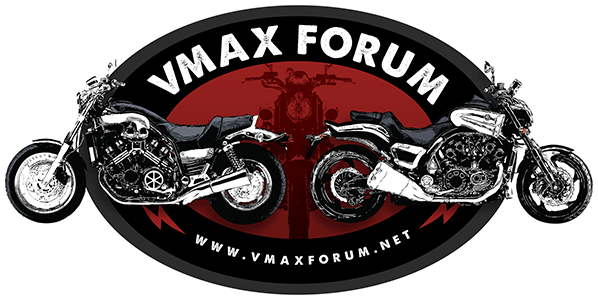Jack Hammer
Well-Known Member
Good to know. At the moment I don't need this but maybe in the future.










Hi there, time for another update.
Over the last months, I`ve been driving and tuning the bike. One of the main things I learned is that only using Manifold Absolute Pressure (MAP) to calculate the fuel load worked great for the 0-10% TPS, above it the MAP values did not have enough resolution and the fuel load wasn't optimal. Since my throttle bodies are quite big, there isn't much underpressure in the throttle bodies on low RPM`s when you open up the throttle. The Throttle Positioning Sensor (TPS) has the opposite drawback, it cannot cope with the 0% to 3% range, which is what you use for slow acceleration and cruising on low speeds.
Luckily, the Speeduino can handle a secondary fuel table. So the one below is used for slow cruising:
View attachment 90381
And starting from 4% TPS, the fuel load source will be the TPS:
View attachment 90382
That makes it best of both worlds. It`s now perfect for cruising and for riding it hard.
Also, I`ve stepped away from using MegaLogViewer to modify the fuel tables based on the logfile and use my own program that can also handle both fuel tables. You feed it the fuel tables and logfile and it generates the corrected new tables based on the AFR seen during the ride. Very nice
With that, it`s as close to tuned as it can be with the current configuration. Still there are some deviations in the AFR logs on quick load changes, especially on very low RPM`s and fuel loads. This is likely because the injectors are quite a bit away from the cylinders. If you open the throttle a bit when air is moving slowly, it can take a bit of time for the modified amount of fuel to reach the cylinders. Also, normal throttle bodies are from metal and they warm up a lot more than my nylon ones. So any dropplets of fuel that hit the walls in those TB`s directly evaporate. In my case, they might stick.
So next step (likely this winter) is to move the injectors as close as can be to the cylinderhead. Red marks the current place, green where I want them to be:
View attachment 90383
So that means some more time in Fusion360 and some more 3D printing. Also, I am running semi-sequential. This means the system only knows the crank angle, but not which stroke. If the crank is at top-dead-center of Cylinder #1, the system doesn't know if it`s at the end of the compression stroke or at the end of the exhaust stroke. As a result, the system squirts half of the required fuel each revolution. The same happens in 'wasted spark' ignition like we all use in the Vmax. Each revolition there is a spark. One revolution it ignites fuel, whihle the next it tries to ignite an empty chamber.
If I move the injectors close to the valves, the timing of the fuel becomes way more important. Therefore I need to run fully sequential, which knows not only the crank angle but also the correct stroke a cylinder is in. The system can then supply all the fuel just before the valve opens. To accomplish that, you normally use a CAM sensor that triggers on a camshaft lobe. Since those sensors are expensive, big and require me to drill a hole in the cylinderhead or valve cover, I went for a less intrusive solution:
View attachment 90384
Above the TB`s there are now two MAP-sensors. The one on the left is connected to all cylinders. It measures the average of all cylinders which is required for fast-changing MAP readings (that calculate fuel load). The one on the right is only connected to the front-left cylinder. By measuring the manifold pressure at certain crankangles you can detect if the cylinder is sucking in fuel (lower manifold pressure on intake stroke) or if the valves are closed (higher manifold pressure on power stroke).
I created some code for my Speeduino and it can now fully sync (crank angle and correct stroke). With that, I can go fully sequential and move the injectors. Still having fun
Hi Parminio,I think the problem you are having is you don't have a MAF sensor. The way that you have that set up, it's very similar to the IROC Z's of the 80's. They ran into the same issue because the injectors were not only a good bit away from the cylinders, but they were on isolated runners (the tuned port injection system) so there was always a lag until the air flow caught up with the manifold pressure.
They solved that with a MAF sensor at the head of the intake. That told the system how much air was coming in. They could then use that in conjunction with the manifold pressure to make the injectors react accordingly.
Even if you move the injectors closer, they're still probably going to lag a bit as they'll still be waiting for the air flow to catch up to the pressure in the system at any given time given the isolated runners.
The only way I can see around that would be to make an open plenum chamber out of the runners at the top. More like a tunnel ram construction than the tuned port injection system, which is essentially what you have right now.